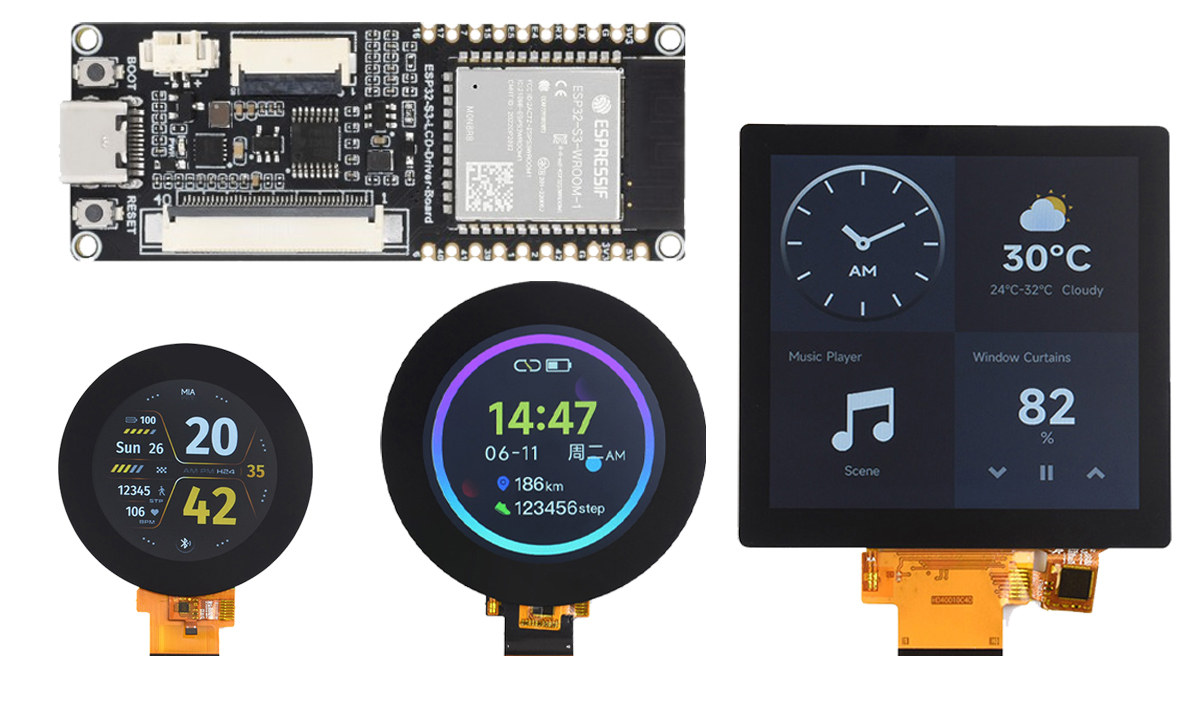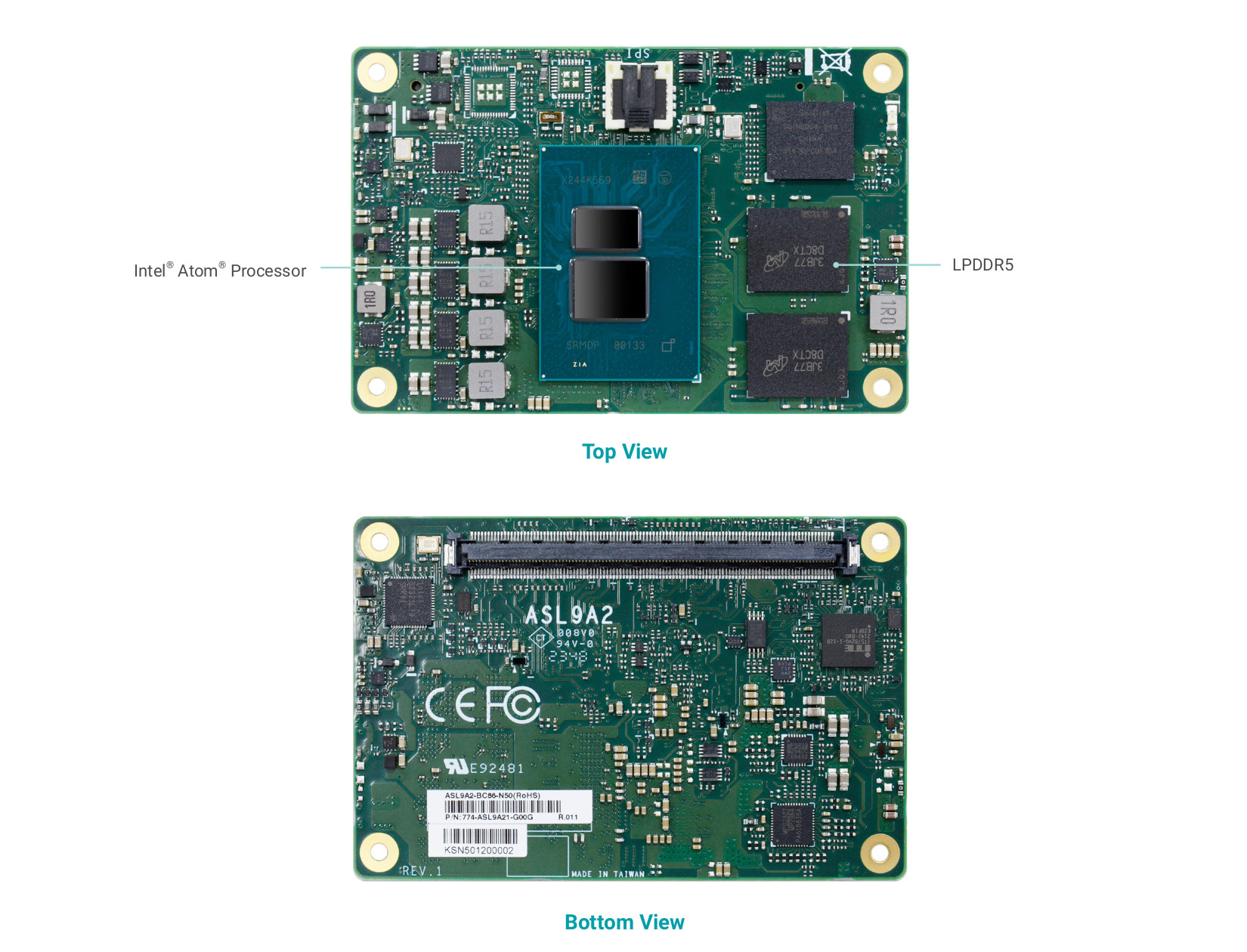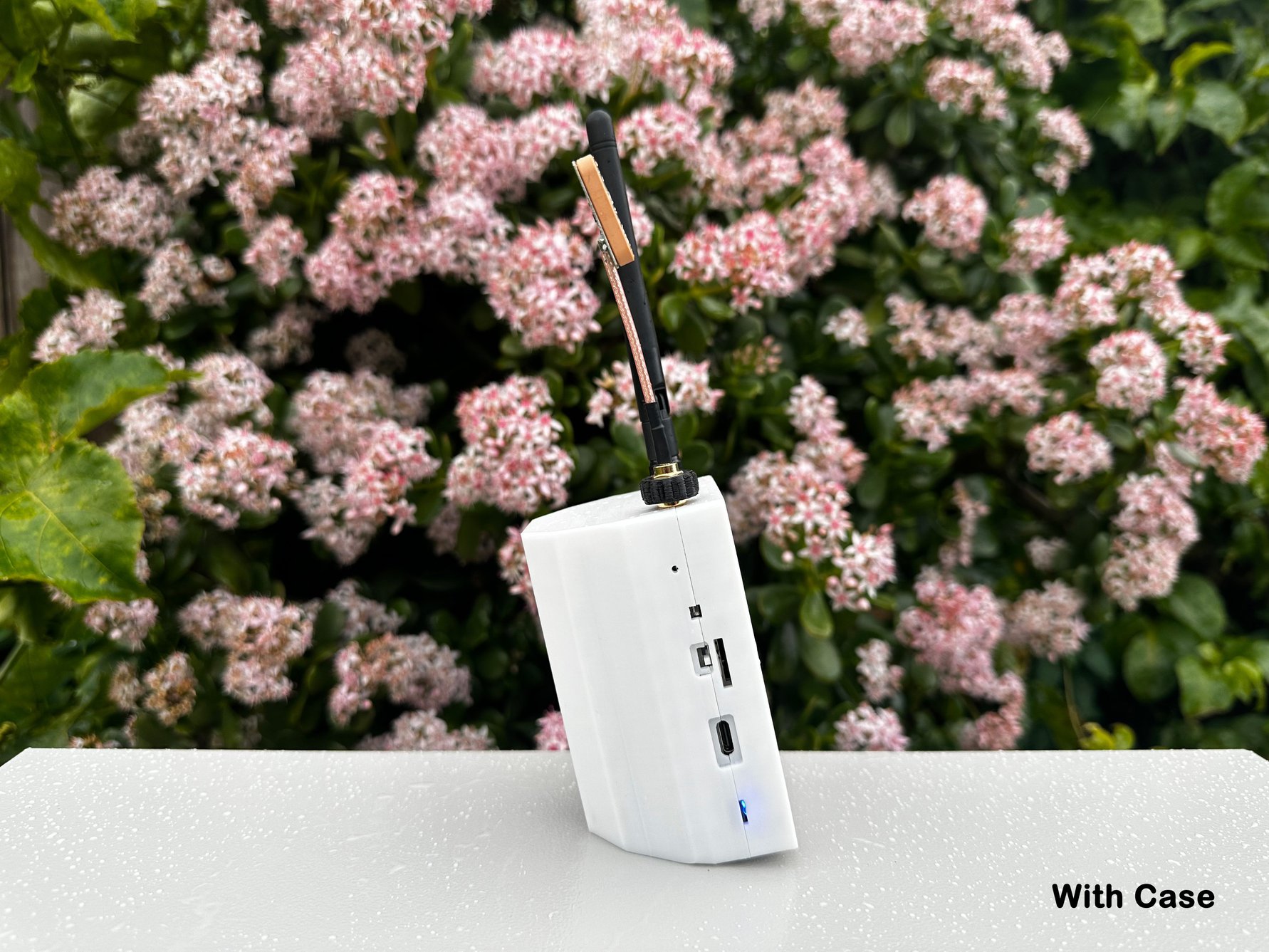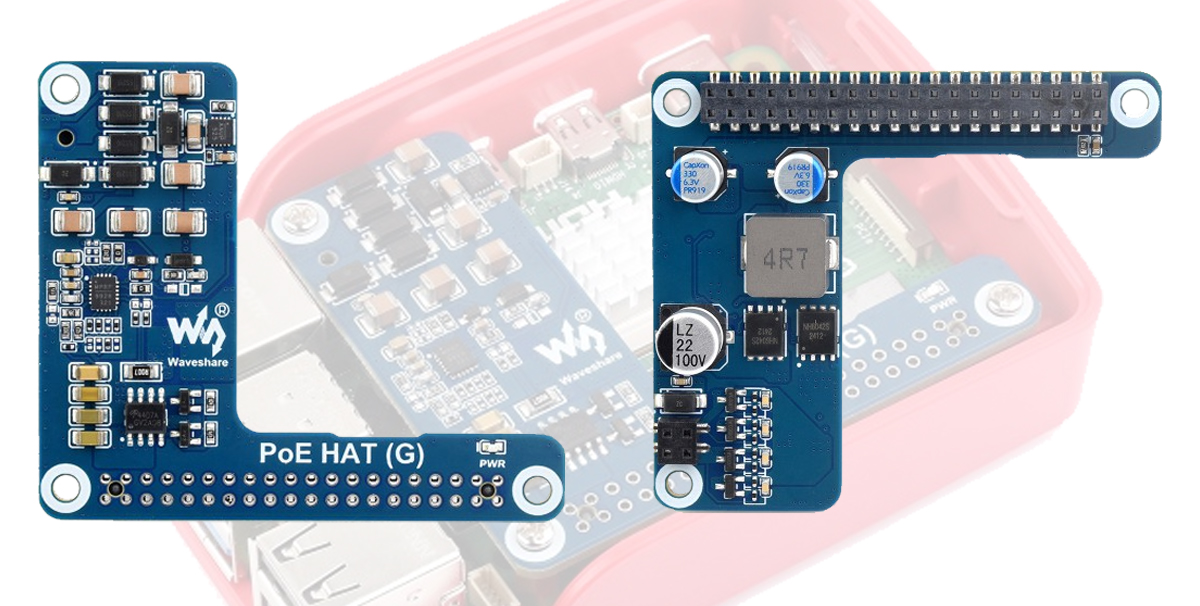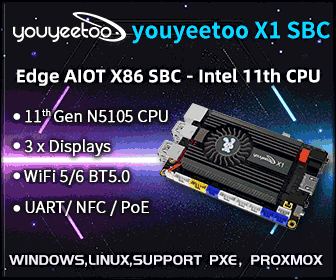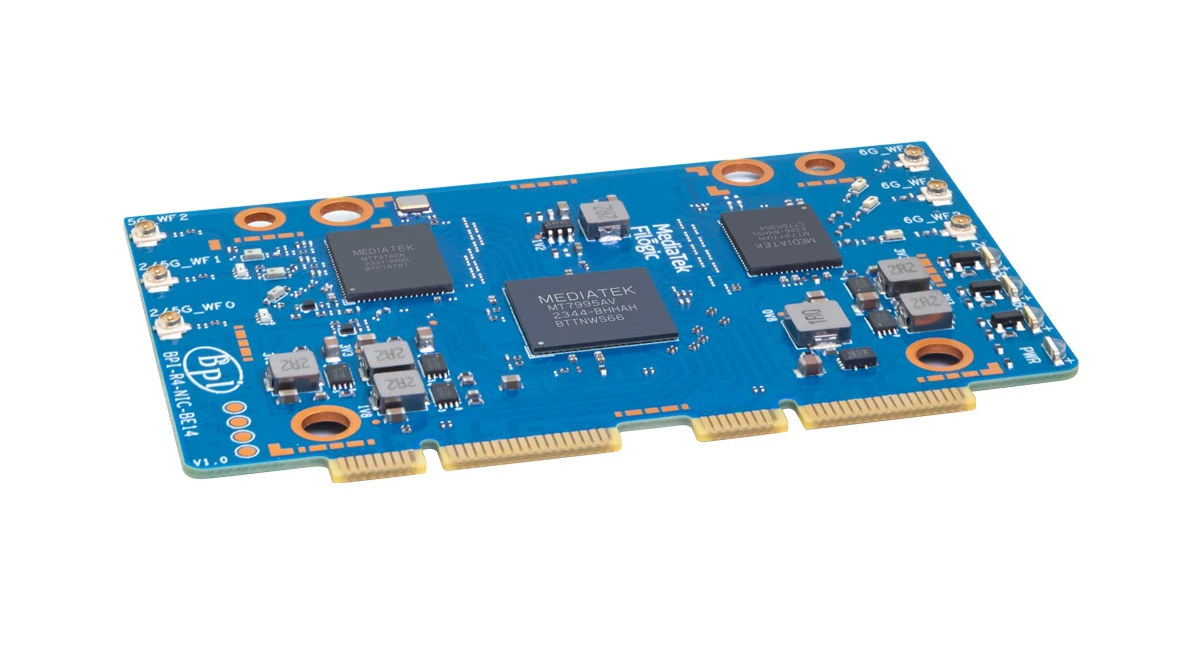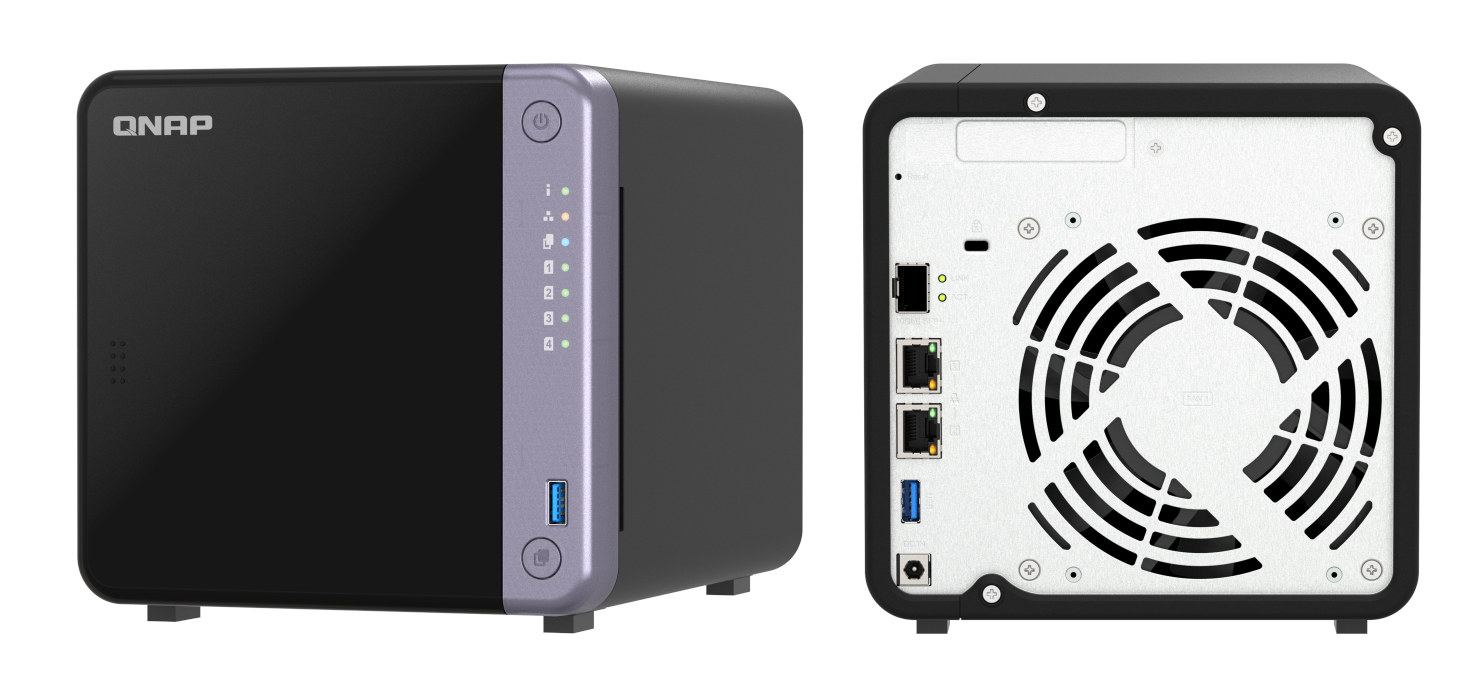Mixtile Edge AI solution supports ONVIF cameras and leverages object detection, object classification, real-time analysis, and intelligent monitoring to create IoT video analytics applications across the security, transportation, logistics, retail, industry, and agriculture sectors. The hardware is based on the time-tested Mixtile Edge 2 Kit IoT gateway powered by a Rockchip RK3568 SoC with a 1 TOPS NPU and 1080p60 VPU, or Mixtile Blade 3 SBC featuring the more powerful Rockchip RK3588 octa-core SoC with a 6 TOPS AI accelerator and an 8Kp60 VPU. The former can analyze up to 10 streams in real-time, and the latter up to a whopping 40 streams. So the novelty here is on the software side that has been developed by Mixtile and works the following way: The ONVIF cameras transmit video streams to a Mixtile Edge AI Box over the network. The Edge AI Box then runs pre-trained AI models to analyze the […]
ESP32-S3 LCD Driver Board supports both circular and square displays
Waveshare ESP32-S3 LCD Driver Board is a compact development board designed to simplify the GUI development process. The company mentions that the board supports 2.1-inch, 2.8-inch, and 4-inch displays and with an additional SPI and I2C header it can support a wide range of LCD panels. Additionally, the board features an onboard lithium battery charger and 15 usable GPIO pins for added flexibility. These features make this device suitable for applications like smart home devices, industrial control panels, and interactive kiosks. It seems like the board supports the 4-inch LF40 square touchscreen display that we wrote about just yesterday. other than that it also supports 2.1-inch and 2.8-inch circular displays. Seeking off circular displays, we have previously written about some ESP32-powered development boards with circular displays like the Waveshare 1.69-inch IPS touch LCD, the Waveshare RP2040-LCD-0.99-B, the Waveshare ESP32-S3-LCD-1.28 and many other types of displays. Feel free to check those […]
DFI ASL9A2 COM Express Mini Type 10 module features Intel Atom x7000RE Amston Lake processor
DFI ASL9A2 is a COM Express Mini Type 10 module based on Intel Atom x7000RE Amston Lake processors which are pin-to-pin compatible with the Alder Lake-N Series processors and designed for the embedded market with a wider operating temperature range. The credit card-sized COM Express Mini module supports up to 16GB LPDDR5 memory, up to 128GB an eMMC flash, and exposes various interfaces such as 2.5GbE, PCIe Gen3, SATA 3.0, DDI and eDP/LVDS for dual display support, ten USB 3.2/2.0, and more. DFI ASL9A2 specifications: SoC (one or the other) Amston Lake Intel Atom x7211RE dual-core processor @ 1.0 to 3.2 GHz with 6MB cache, 16EU Intel UHD graphics; 6W TDP Intel Atom x7213RE dual-core processor @ 2.0 to 3.4 GHz with 6MB cache, 16EU Intel UHD graphics; 9W TDP Intel Atom x7433RE quad-core processor @ 1.5 to 3.4 GHz with 6MB cache, 32EU Intel UHD graphics; 9W TDP Intel […]
The ESP32 Marauder Pocket Unit v2 is a wireless penetration device with an onboard GPS module and touchscreen
The ESP32 Marauder Pocket Unit with GPS v2 is a portable Wi-Fi and Bluetooth penetration tool powered by an ESP32 module and used to test and analyze wireless networks. It features a 2.8-inch touchscreen, two 18650 batteries, an SD card slot, an LED battery indicator, and two external antennas for 2.4GHz Wi-Fi and GPS. ESP32 Marauder Pocket Unit v2 specifications: Microcontroller – ESP32 Wi-Fi & Bluetooth SoC Storage – MicroSD card slot for file sharing, backup, and firmware updates (8GB SanDisk memory card included) Display – 2.8-inch capacitive touchscreen USB – USB-C port for charging GNSS – Embedded GPS module Antenna – External dual antenna SMA connectors for WIFI and GPS Misc 1x battery status indicator Reset and Power buttons Power – 2x 18650 batteries Dimensions – 92 x 71 x 46mm The ESP32 Marauder device is based on JustCallMeKoko’s ESP32Marauder Project, a suite of Wi-Fi/Bluetooth offensive and defensive tools […]
Microchip PIC64GX is a quad-core 64-bit RISC-V microprocessor for real-time processing
Microchip has introduced its first 64-bit RISC-V microprocessor family with the PIC64GX pin-to-pin compatible with the company’s PolarFire SoC FPGA devices and designed for edge designs for the industrial, automotive, communications, IoT, aerospace, and defense segments. The PIC6GX MPU supports asymmetric multiprocessing (AMP) to run Linux, real-time operating systems, and bare metal in a single processor cluster with secure boot capabilities. The company further claims the PIC64GX MPU is “the first RISC-V multi-core solution that is AMP capable for mixed-criticality systems”. The first member of the PIC64GX RISC-V family is the PIC64GX1000 microprocessor. Microchip PIC64GX1000 specifications: CPU Quad-core SiFive U54 64-bit five-stage, single-issue, in-order pipeline RISC-V (RV64GC) processor at up to 625 MHz with AMP and deterministic latencies, PMP and MMU units Single-core SiFive E51 64-bit RISC-V (RV64IMAC) monitor processor core at up to 625 MHZ with PMP unit Cache L1 memory subsystem with Single-Error Correct, Double-Error Detect (SECDED) Flexible […]
Waveshare PoE HAT (G) is a compact 25W PoE HAT+ for the Raspberry Pi 5
Waveshare PoE HAT (G) is a compact, easy-to-assemble “mini HAT” designed especially for the Raspberry Pi 5. The most unique thing about this PoE HAT+ is that Waveshare designed it so compact that it could fit in the stock Raspberry Pi case with the cooling fan attached. It supports the IEEE 802.3af/at network standard, delivering up to 5V/5A power output. Other features of the HAT+ include a 40-pin GPIO header, a non-isolated switched-mode power supply, and compatibility with 803.3af/at PoE routers or switches. This makes it ideal for remote monitoring, IoT applications, and networked devices. After the Raspberry Pi 5 was released in the last quarter of 2023, we saw Waveshare launch the PoE HAT (F), which also doubled as a cooling solution and followed the official Raspberry Pi PoE+ HAT introduced in 2021. Both modules are compatible with 802.3at (aka PoE+) and 802.3af standards and support up to 25.5 […]
Banana Pi BPI-R4-NIC-BE14 WiFi 7 module for BPI-R4 SBC launched for $74
The Banana Pi BPI-R4 was introduced last year as a WiFi 7 router board with two 10GbE SFP cages and four GbE ports based on MediaTek Filogic 880 SoC. The only issue is that WiFi 7 is implemented through a dual mini PCIe module that was not available until now. The good news is that the tri-band Banana Pi BPI-R4-NIC-BE14 WiFi 7 module for the Banana Pi BPI-R4 board can now be purchased for $73.69 on Aliexpress. It is based on MediaTek MT7995AV WiFi 7 chipset, MT7976CN dual-band (2.4GHz and 5 GHz) chipset, and MT7977IAN 6GHz chipset. Banana Pi BPI-R4-NIC-BE14 specifications: MediaTek MT7995AV WiFi 7 – IEEE 802.11 a/b/g/n/ac/ax/be compliant 32-bit RISC-V MCU for Wi-Fi protocols and Wi-Fi offload Embedded SRAM and ROM UART interface with hardware flow control MediaTek MT7976CN dual-band 2.4GHz 2×2 MIMO and 5GHz 3×3 MIMO MediaTek MT7977IAN 6GHz 3×3 MIMO Bandwidth 2.4 GHz – 20 and […]
QNAP unveils TS-432X and TS-632X Arm-based NAS with 10GbE networking, up to six SATA bays
QNAP has unveiled TS-432X 4-bay and TS-632X 6-bay Tower NAS systems that feature not only 2.5GbE ports but also one or two 10GbE SFP+ cages, as well as one PCIe Gen 3 x4 slot and are powered by an Annapurna Labs Alpine AL524 4-core 64-bit Arm processor. We had seen NAS with 10GbE networking before such as the QNAP HS-453DX and ASUSTOR FLASHSTOR, but those were powered by Intel processors. The new TS-432X and TS-632X NAS systems combine a 64-bit Arm processor and 10GbE networking in a way similar to the earlier QNAP TS-431X-2G-USARM powered by a dual-core 32-bit Arm CPU. QNAP TS-432X/TS-632X specifications: SoC – Annapurna Labs Alpine AL524 4-core 64-bit Arm processor @ up to 2.0 GHz System Memory – 4GB DDR4 (non-ECC), upgradeable up to 16GB DDR4 (ECC memory supported) via SO-DIMM socket Storage 512 MB flash with dual boot OS protection Drive bays TS-432X – […]



